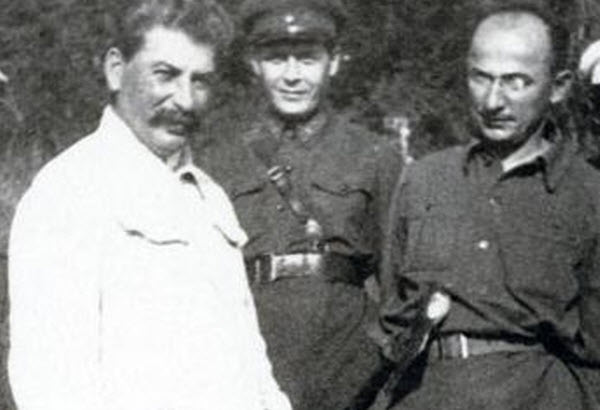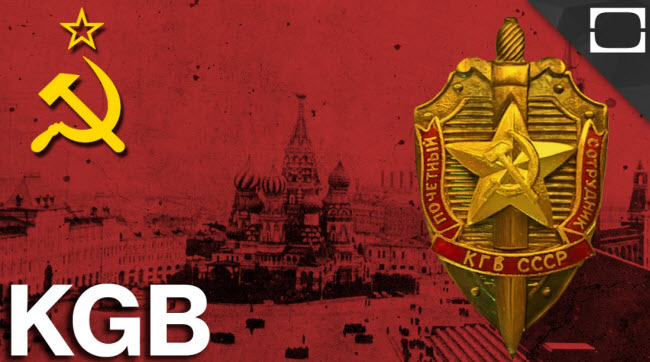The Soviet intelligence agency, known as the KGB, was the primary security agency of the former Soviet Union (now Russia). It undertook numerous critical tasks, including foreign intelligence, counterintelligence, border protection, anti-espionage, safeguarding the Central Committee of the Communist Party and the Soviet government, organizing and ensuring the security of government communications, and combating nationalist, dissident, and religious activities against the Soviet communist regime. Predominantly a military institution governed by military laws and regulations, the KGB was notorious for its confrontations with Western intelligence agencies, notably the CIA, during the Cold War. The agency eventually dissolved with the collapse of the Soviet Union, giving way to the Foreign Intelligence Service (SVR) and later the Federal Security Service of the Russian Federation (FSB).
Security Before the Soviet Intelligence Agency
The KGB was established in 1954, representing the most enduring of a series of security agencies beginning with the Cheka, founded in December 1917 during the early Bolshevik government. Initially tasked with investigating counter-revolutionary activities and sabotage, the Cheka quickly expanded its responsibilities to include arrests, imprisonment, and execution of state enemies such as former nobles, bourgeoisie, and clergy. The Cheka played a significant role in the Russian Civil War (1918-1920) and helped crush anti-Soviet rebellions. By 1921, the Cheka had over 250,000 employees and was responsible for executing over 140,000 individuals. Its first head, Felix Dzerzhinsky, developed a ruthless strategy for eliminating adversaries.
By 1922, a new security agency, the State Political Directorate (GPU), replaced the Cheka, in an attempt by the Communist Party to erase the previous agency’s negative reputation. A year later, it was renamed the United State Political Directorate (OGPU), tasked with additional responsibilities, including managing labor camps and monitoring the population. Under Soviet leader Joseph Stalin, the OGPU executed repressive measures such as forced agricultural collectivization, deportations to gulags, and show trials for “enemies of the people.” By the early 1930s, the agency had gained control over all Soviet security functions, backed by a vast network of informers in factories, government offices, and the Red Army. It also conducted covert operations abroad to disrupt the activities of regime opponents, sometimes involving kidnapping or assassination.

In the mid-1930s, the OGPU was absorbed into a new organization, the NKVD or People’s Commissariat for Internal Affairs, which assisted Stalin in consolidating his power through purges, executing over 750,000 people in 1937-1938 alone. Among the victims were tens of thousands of party officials, military officers, and security personnel, including more than half of the Central Committee members. The first two heads of the NKVD, Genrikh Yagoda and Nikolai Yezhov, were succeeded by Lavrentiy Beria. By 1941, the NKVD’s responsibilities for state security were transferred to the NKGB, or People’s Commissariat for State Security. Both agencies subsequently became ministries: the Ministry of Internal Affairs (MVD) and the Ministry of State Security (MGB). In 1946, Beria, as a member of the Central Committee, oversaw both ministries and was also responsible for the Soviet nuclear weapons program and intelligence operations targeting American and British atomic bomb projects.
Despite being under Beria’s oversight, the MGB’s executive director, Semyon Denisovich Denisov, played a crucial role in the Soviet war effort during World War II. His ministry conducted espionage, counterespionage, managed prisoner-of-war camps, and ensured the loyalty of officers. The MGB also oversaw the deportation of suspected disloyal groups to Siberia and Central Asia, including over a million Germans from the Volga, Crimean Tatars, Chechens, and other Caucasian peoples. After the war, it reinforced Soviet control in Eastern Europe by crushing all opposition, real or suspected, and within the Soviet Union itself. Between 1945 and 1953, over 750,000 Soviet citizens were arrested and punished for political crimes, with subsequent revelations in the 1990s showing that by 1953, about 2.75 million Soviet citizens were in prisons or forced labor camps, with a similar number in internal exile.

In fact, Soviet intelligence during Stalin’s final decade was remarkable in its scope and success. During World War II, the MGB conducted operations in Nazi-occupied Europe, with one of its networks, known as the “Red Orchestra,” consisting of several hundred agents and informers, including operatives within German foreign, labor, propaganda, and economic ministries. Declassified Russian and American documents indicate that by 1945, the Soviet Union had placed at least five agents within the American nuclear weapons program and possibly up to 300 agents within the U.S. government itself. Soviet intelligence also penetrated British diplomatic and security institutions, including key agents like Kim Philby, a senior British intelligence officer. Evidence suggests that Soviet agents in Britain transmitted between 15,000 to 20,000 documents to Moscow between 1941 and 1945, and most Soviet intelligence agents in Britain and the U.S. were ideological supporters of the regime, many being members of Communist parties.
Immediately after Stalin’s death in March 1953, the MGB was once again merged into the Ministry of Internal Affairs (MVD) under Beria’s supervision. By the end of the summer, the post-Stalin leadership, led by Nikita Khrushchev, turned against the power-hungry Beria, who was arrested and executed. A series of trials and executions of his senior aides continued until 1956. During this period, millions of political prisoners were released from detention camps, and the MVD was gradually dismantled, eventually abolished in 1960.
Formation and Roles of the Soviet Intelligence Agency

The Soviet intelligence agency, KGB, was officially established in 1954 to act as the sword and shield of the Communist Party. The new security agency, which played a key role in purging Beria’s supporters, was meticulously controlled by senior party officials. It was divided into nearly 20 departments, the most significant of which were responsible for foreign intelligence, internal counterintelligence, technical intelligence, political protection, and border security. In the late 1960s, an additional department was created to monitor dissidents, suspected individuals in churches, and intellectuals. Over the next twenty years, Soviet intelligence increasingly pursued enemies, harassing, arresting, and sometimes exiling human rights defenders and intellectuals believed to be disloyal to the regime. Notable victims included Nobel laureates Alexander Solzhenitsyn and Andrei Sakharov.
Gradually, Soviet intelligence expanded its foreign operations to become the largest foreign intelligence agency in the world. As the Cold War with the United States intensified, the KGB was seen as the Soviet counterpart to the CIA. However, unlike its American counterpart, the Soviet KGB engaged in numerous domestic activities on Soviet soil and against Soviet citizens. Many KGB agents operated undercover as businessmen and journalists, though many also used traditional diplomatic cover. The KGB succeeded in penetrating many Western intelligence agencies, placing influential agents within almost every major capital. The Soviet intelligence agency also acquired scientific and technological information for the Soviet military, repeatedly obtaining advanced technologies necessary for developing Soviet submarines, aircraft, and missiles. The agency enjoyed extensive access to secrets from both its adversaries and allies.

By the end of the 1960s, Soviet intelligence had become firmly established as the Communist Party’s security apparatus, with its value as a tool for political control reflected in the appointment of Yuri Andropov as head of the Politburo in 1973 and later as party leader in 1982. Under Andropov’s leadership, the KGB recruited the best and brightest party members. With reformist Soviet leader Mikhail Gorbachev in power from 1985 to 1991, the agency’s performance declined. Despite Gorbachev’s respect for Soviet intelligence’s prowess in foreign espionage, his reform agenda undermined its power and that of the Communist Party. In the summer of 1991, several senior KGB officers, including its head Vladimir Kryuchkov, played key roles in a failed coup attempting to restore Soviet ideological and bureaucratic purity. Following the coup’s failure, the KGB was systematically stripped of its extensive military units and many internal security functions.
With the dissolution of the Soviet Union in 1991, Soviet intelligence came under Russian control. President Boris Yeltsin’s government oversaw the division of the KGB into several main agencies responsible for internal security and foreign intelligence. Ukraine, Belarus, and other former Soviet republics established their own intelligence and security services, maintaining connections with those in Russia.
Evaluation of the Agency

At its peak, Soviet intelligence was the largest secret police and foreign intelligence organization in the world. Researchers with access to Communist Party archives estimate that the KGB had over 480,000 members, including 200,000 border guards. Estimates suggest that the number of informers in the Soviet Union could reach into the millions, as every Soviet leader relied on the agency for information, monitoring key elites, and controlling the population. Alongside the Communist Party and the military, Soviet intelligence formed the triumvirate of power that governed the country, playing a crucial role in Soviet foreign policy and enabling the Soviet Union to maintain near parity with the West in nuclear and other weapon systems. However, the agency’s role within the country was terrifying, and while historians may debate the human cost of the KGB and its predecessors, many estimate that they were responsible for the deaths of tens of millions of people.
The critical question in evaluating Soviet intelligence operations, both external and internal, is why it failed to prevent the ultimate collapse of the Soviet system. Some attribute this failure to the agency’s own issues with bureaucratic inefficiency and corruption, mirroring the problems of the rigid political leadership. Additionally, during the final decade of Soviet power, many Soviet intelligence officials defected to the West or agreed to work as agents in Moscow. Furthermore, some studies suggest that despite its infamous reputation in the world of espionage, the Soviet intelligence agency (KGB) lacked the analytical skills necessary to form an accurate picture of the deteriorating international and domestic situation of the regime.
